Best
Lower Viola
String
-
Overall: Virtuoso - lower tension than originals
-
Best Feature: Steel A string produces the brightness and brilliance needed
-
TedScore™: 8/10
Best
Overall Viola
String
-
Overall: Flexible multifilament core
-
Best Feature: Insensitive against humidity changes
-
TedScore™: 8/10
Best
Affordable Viola String
-
Overall: Full size viola C string with ball tailpiece end
-
Best Feature: Medium gauge tension for optimum playability
-
TedScore™: 8/10

Viola strings can make a sound so magical that it feels truly captivating. I recall the first time I tried playing; it was as if I had stumbled upon a hidden language within the music.
Exploring the world of viola strings is like going on a musical journey.
Each string, from the deep C to the bright A, brings a unique character to your playing. I can tell you which strings can make your viola sound even better!
Each string on your instrument has a unique story; I’m here to share these secrets with you. So, continue reading as we explore the beautiful sounds of the viola, and I guarantee you’ll fall even more in love with your instrument.
Choosing the Right
Viola Strings

When I’m hunting for viola strings, it feels like a personal quest for that perfect sound. It’s a choice that marries my technique and musical expression with my viola’s unique voice.
Factors to Consider
I’ve noticed that temperature and humidity can affect viola strings, so I’m careful to choose strings that work well in my playing environment.
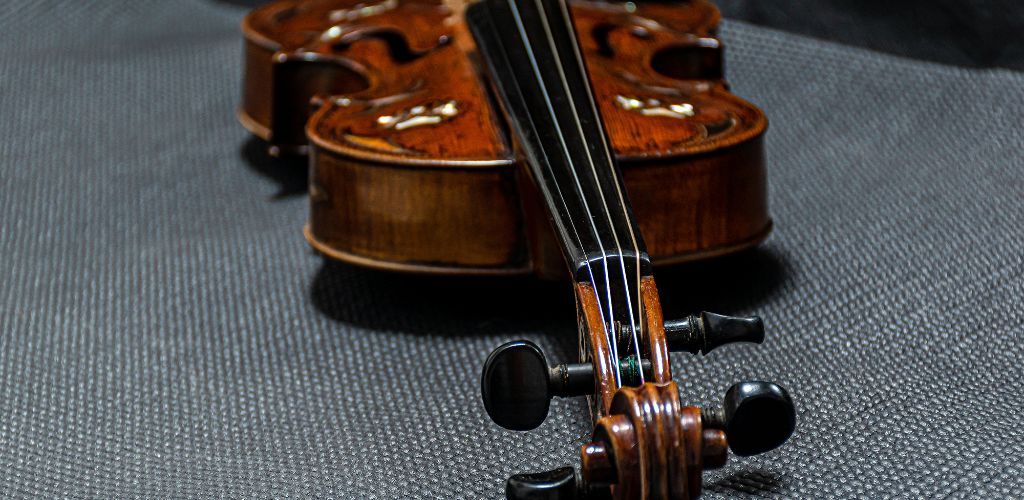
I also consider my playing style—whether I prefer a rich or bright tone—and experiment with different strings to see how they match my technique.
My personal preference guides me in choosing strings that resonate with me, whether they have a steel or synthetic core.
Best Viola Strings
Thomastik Dominant Viola String Set
Dominant strings are fondly thought of, offering me a balanced and versatile experience.
Thomastik Dominant Viola String Set

FEATURES: Flexible multifilament core
OTHER INFO: Insensitive against humidity changes
Thomastik Dominant Viola String Set
- Reasonable price
- Sound may be too ‘basic’ for some intermediate violists.
When you click ‘Check Price’, you’ll see there are loads of great places to buy this item. Our personal favorite is Sweetwater for the US, and Thomann and Gear4Music for the UK & Europe.
They are the largest music retailers, with excellent customer service, competitive prices, really fast shipping, and the longest guarantees.
The professional musician who wrote this article combined many things,
from the product build, manufacturer’s reputation through to feedback
from other users, to create our famous TedScore™.
Thomastik-Infeld S23 Spirocore Viola String Set
For a spirited and robust sound, Spirocore has been a reliable companion.
Thomastik-Infeld S23 Spirocore Viola String Set
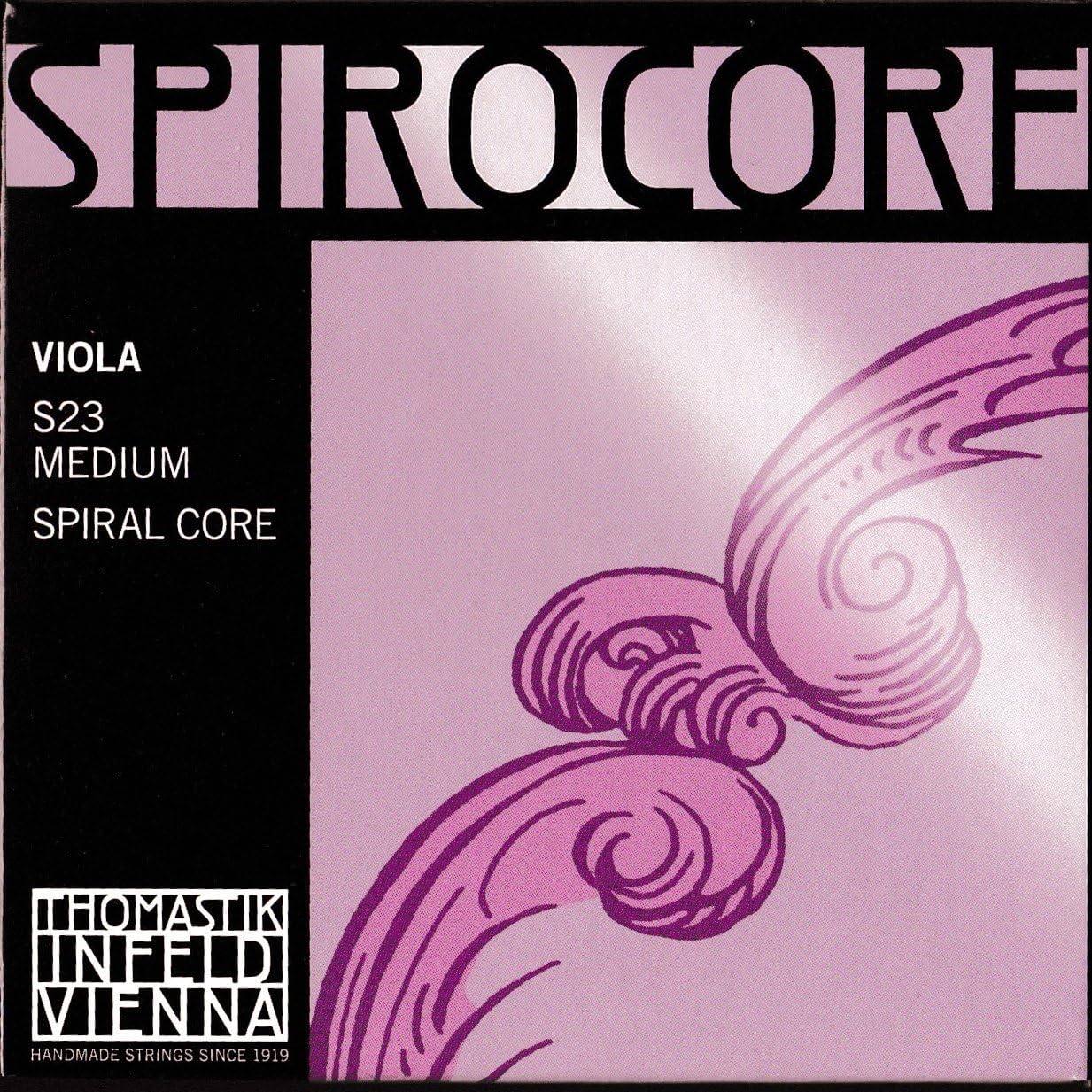
FEATURES: Widely recognized as the reference standard
OTHER INFO: Distinctive, playable, durable, and responsive
- Offer longer periods of musical vibration and reduce inertia
- May have a relatively higher tension
When you click ‘Check Price’, you’ll see there are loads of great places to buy this item. Our personal favorite is Sweetwater for the US, and Thomann and Gear4Music for the UK & Europe.
They are the largest music retailers, with excellent customer service, competitive prices, really fast shipping, and the longest guarantees.
The professional musician who wrote this article combined many things,
from the product build, manufacturer’s reputation through to feedback
from other users, to create our famous TedScore™.
Pirastro Obligato Viola String Set
Evah Pirazzi and Obligato strings, hailing from the Pirastro family, have been known to serenade viola players with their dynamic and rich tones.
Pirastro Obligato Viola String Set

FEATURES: Full size viola C string with ball tailpiece end.
OTHER INFO: Medium gauge tension for optimum playability.
- Ideal for solo viola and fast playing musicians.
- String may take some time to settle and stabilize after installation.
When you click ‘Check Price’, you’ll see there are loads of great places to buy this item. Our personal favorite is Sweetwater for the US, and Thomann and Gear4Music for the UK & Europe.
They are the largest music retailers, with excellent customer service, competitive prices, really fast shipping, and the longest guarantees.
The professional musician who wrote this article combined many things,
from the product build, manufacturer’s reputation through to feedback
from other users, to create our famous TedScore™.
Larsen Virtuoso Viola String Set, Medium Ball End
And let’s not forget about Larsen, with their strings often praised for their warmth and richness.
Larsen Virtuoso Viola String Set, Medium Ball End

FEATURES: Virtuoso - lower tension than originals.
OTHER INFO: Steel A string produces the brightness and brilliance needed.
- Multi-filament synthetic core allows for more stability.
- May be limited in certain regions.
When you click ‘Check Price’, you’ll see there are loads of great places to buy this item. Our personal favorite is Sweetwater for the US, and Thomann and Gear4Music for the UK & Europe.
They are the largest music retailers, with excellent customer service, competitive prices, really fast shipping, and the longest guarantees.
The professional musician who wrote this article combined many things,
from the product build, manufacturer’s reputation through to feedback
from other users, to create our famous TedScore™.
Passione strings whisper promises of a complex and colorful sound palette. I need to choose a brand that feels in tune with my musical soul.
Viola Strings and Their Characteristics

My journey with the viola has taught me that the strings are not just mere accessories; they’re the instrument’s soul, dictating the sound’s richness and versatility.
Materials and Construction
When I chat about viola strings, I talk about a fascinating blend of materials.
I’ve noticed that modern strings come in three core types: gut, steel, and synthetic.
Gut strings are made from sheep’s intestines and are wound with metals like silver to increase their mass.
Steel core strings are robust and stable, giving me a bright, focused tone. Their construction includes a steel core, often wrapped in chrome or nickel.
Synthetic core strings — usually made of composite fibers like nylon — mimic the gut strings’ warm, rich tones with the added benefit of stability.
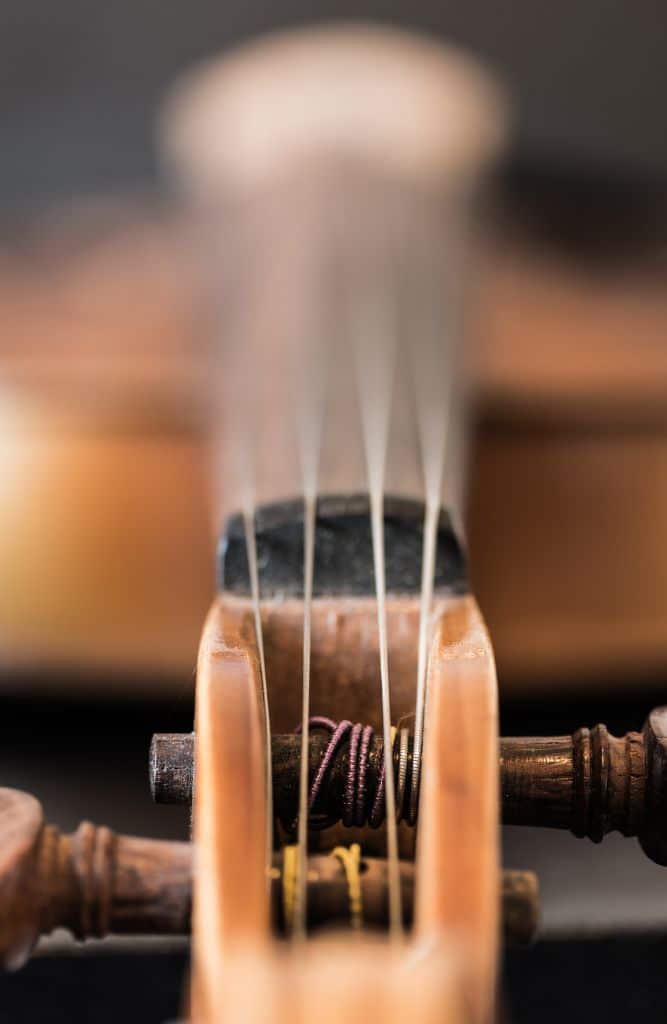
Tuning and Tone
The viola is tuned to C, G, D, and A, and each string is a perfect fifth apart. The material and thickness of the string affect the sound.
Steel strings have a bright sound and a clear pitch, while synthetic and gut strings have a warm, rich tone. I adjust the strings carefully to keep the right pitch and prevent them from breaking.
Playing the Viola
Mastering the viola involves a blend of precise techniques and an understanding of musical contexts. Let me share a bit about how we can embrace the uniqueness of viola playing.
Techniques and Posture

Posture is the foundation of good viola play. I stand straight and relaxed, hold the viola securely between my chin and shoulder, and keep my left hand free to move along the neck.
Bow grip and left-hand finger placement are crucial; they should feel natural and flexible to allow for expressive playing.
The alto clef is the viola’s main clef and where I read most music, though I switch to the treble clef for higher passages. Over time, I’ve picked up various bowing techniques, like legato and spiccato, which add different textures to the music.
Free sheet music for the viola is widely available online, offering a valuable resource for players to access a variety of musical compositions.
The Viola in Different Music Genres

Viola music encompasses a diverse range of genres and styles, offering a rich repertoire for players to explore.
In orchestral music, the viola sings harmonies and supports the musical structure. I’ve relished the intricate dynamics that the viola brings to smaller groups in chamber music, where our voice becomes more prominent.
Exploring music through the ages, I’ve dabbled in Baroque and Classical pieces, each requiring distinct techniques and stylistic nuances.
And for a twist, the electric viola offered me a gateway to modern genres, expanding my horizons with exciting soundscapes. Additionally, electric violas have gained popularity, offering modern musicians innovative ways to explore and expand the instrument’s sonic possibilities.
Understanding the Viola
In the family of this string instrument, the viola plays a crucial middle voice, often overlooked but absolutely enchanting. Here’s a peek into its world.
Anatomy of a Viola
The viola, typically 15 to 17 inches in size, exhibits a rich, warm tone that’s unmistakably versatile.
The four strings—C, G, D, and A—are each a perfect fifth apart, creating a beautiful depth when played.
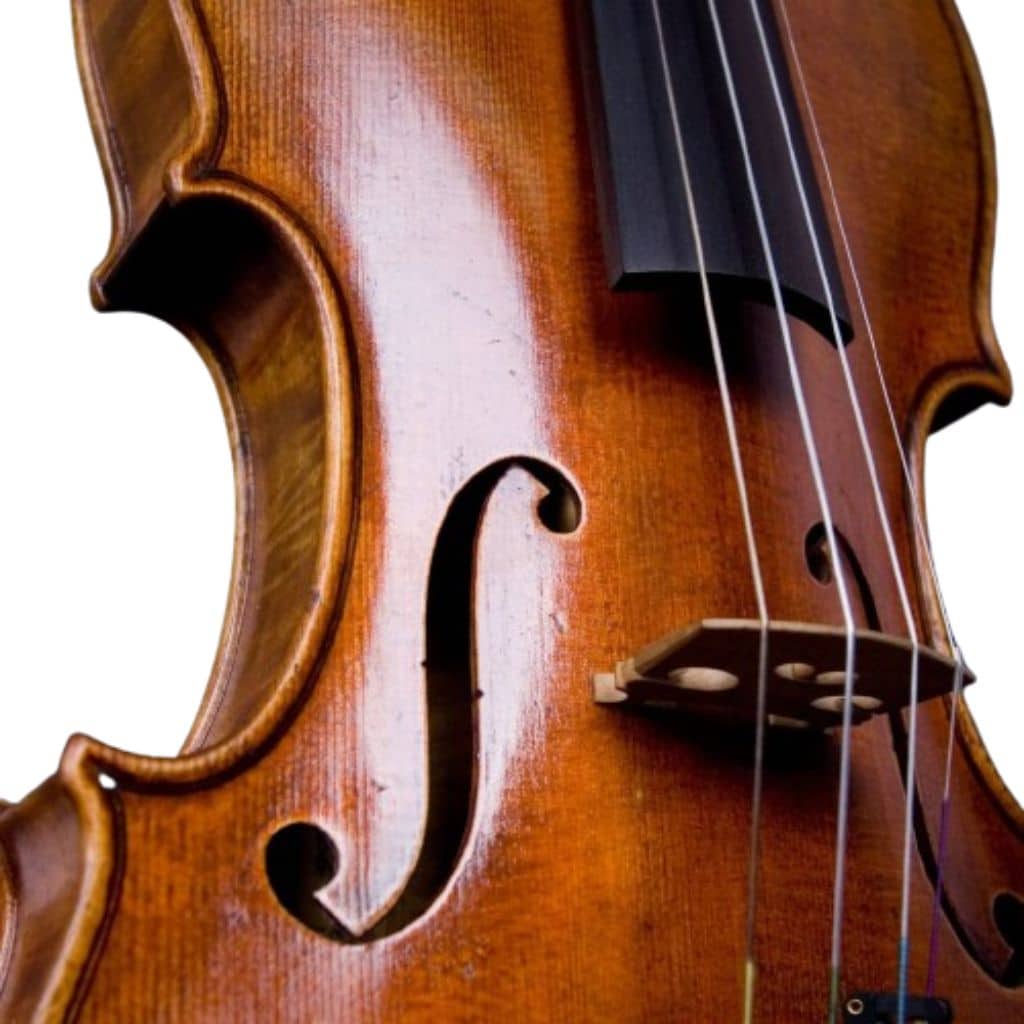
Viola vs Violin: Key Differences

The viola may look similar to a violin, but it’s bigger, giving it a lower and mellow sound.
The tuning and the strings are different, too, with the viola having a deeper C string instead of the violin’s E string. Also, while violinists read treble clef, I read alto clef, which is made for the viola’s range.
Violin bows are often used interchangeably with those designed for the viola, providing versatile options for musicians.
Like other string instruments, the viola’s expressive qualities and resonant sound make it a versatile addition to musical ensembles. Its alto voice and the unique timbre of the G string contribute to its distinct and captivating sound.
Strings on a viola:
Summary
Selecting just the right strings for viola can be a transformative experience. It’s like giving the instrument a voice that resonates perfectly with my musical intentions.
Whether I’m hunting for strings that offer a rich, warm tone or those that promise a bright and clear sound, it’s essential to consider the material, gauge, and tension of the strings to match my playing style and the character of my viola.
Experimenting with different string combinations can lead to exciting discoveries.
A Larsen A string paired with lower strings from Thomastik Vision or Spirocore Wolframio caters to a diverse range of music, from orchestral to chamber pieces.
The joy is finding that string set-up that feels like an extension of myself. Blending the rich variance of strings to find my viola’s most authentic voice is such an adventure!
Hold on, there’s more…
Explore the top 5 violas for beginners in this article.
FAQ's
The four strings of a viola are typically tuned to the pitches C, G, D, and A, with the C string being the lowest pitch and the A string being the highest.
The standard violin string tuning is C-G-D-A, from lowest to highest pitch.
No, a standard viola typically has four strings.
Viola strings are commonly made from gut, synthetic core, or metal (steel or nickel). Each material produces a distinct tone and has unique playing characteristics.




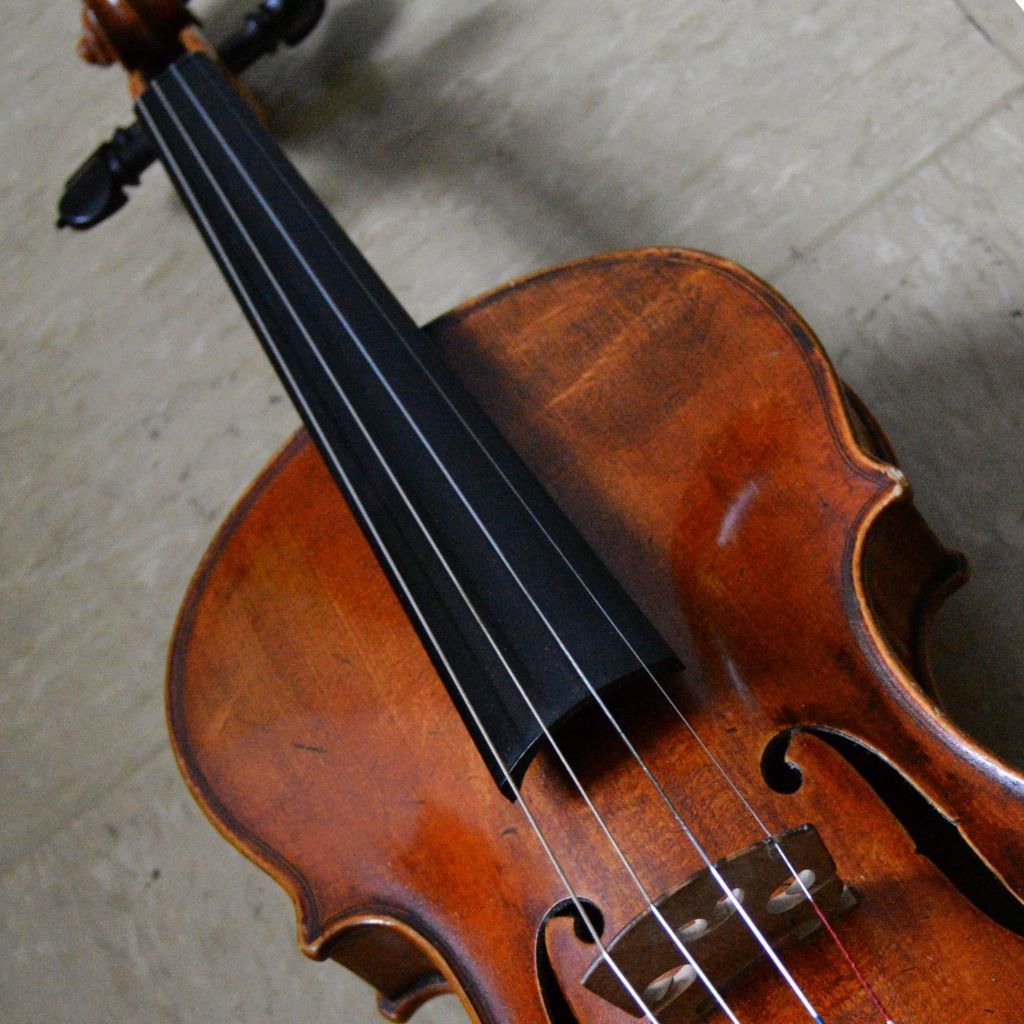








Gotta say, I’m not totally sold on the idea that one set of strings can cover all your needs, especially when you’re talking about playing across different genres. I’ve experimented with a few you mentioned, like the Larsen Virtuosos and the Spirocores, and each set brings something unique to the table, sure, but what about hybrid setups? I’ve met players who mix and match strings to get a more versatile sound. Any thoughts on breaking tradition and going hybrid, or is sticking to a single set the way to go?
Interesting read! I always tell my students about the importance of choosing the right strings for their viola. It really makes a difference in sound quality and playability. I’ll be sharing some points from here in my next class. The detail on materials and construction is particularly helpful.
Really appreciate the deep dive into viola strings and their characteristics. As a music ed student, I find it super helpful to understand how materials and construction affect sound. It’s one thing to read about string theory in textbooks, but seeing real-world applications and recommendations like in this article makes it much easier to grasp. Keep up the great work!
Fantastic breakdown of the string options, Mark Gibbs. The comparison is invaluable, especially for students making their first string purchase.
i’m gonna have to disagree with putting Larsen strings so high up. they’re good, but in my experience, they don’t deliver the same depth as Obligato. Anyone else thinks the same or am I floating solo here?
totally get where ur coming from, Larsen has its place but obligato has depth
You’re not alone on that. Larsen’s are bright but for richness and warmth, Obligato’s take the lead. It’s all about what you’re looking for in your play.
Fascinating article, Mark Gibbs. It’s intriguing to note the nuanced differences between violins and violas, especially in terms of string construction. This really highlights the unique nature of each instrument.
Any advice on how to pick between Pirastro and Thomastik strings for a warmer sound? I’m all about that mellow tone.
Hey there, got a question for you, Mark Gibbs. Your list of the best viola strings is super helpful, but I’m kinda stuck between choosing the Thomastik Dominant and the Pirastro Obligato sets. Any chance you could give me a bit more insight into which might be better for a warmer tone? Thanks a bunch!
is it easy to change strings if i get it wrong? kinda worried about doing it myself lol
Hey ViolaLover99, if you’re after warmth, Obligato has a really nice, rich tone. Can’t go wrong with them for warmth!